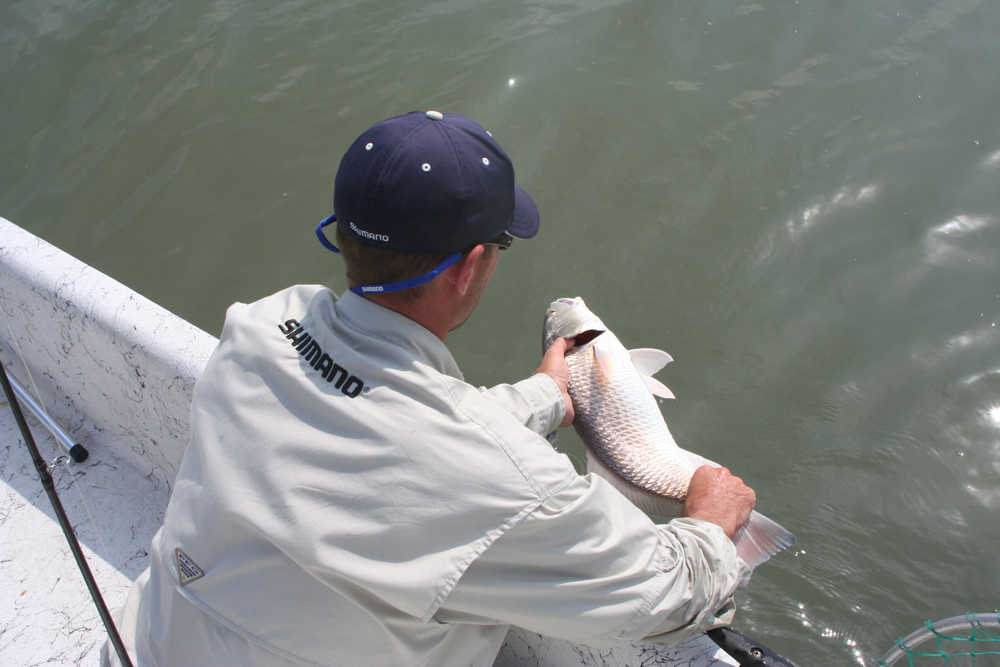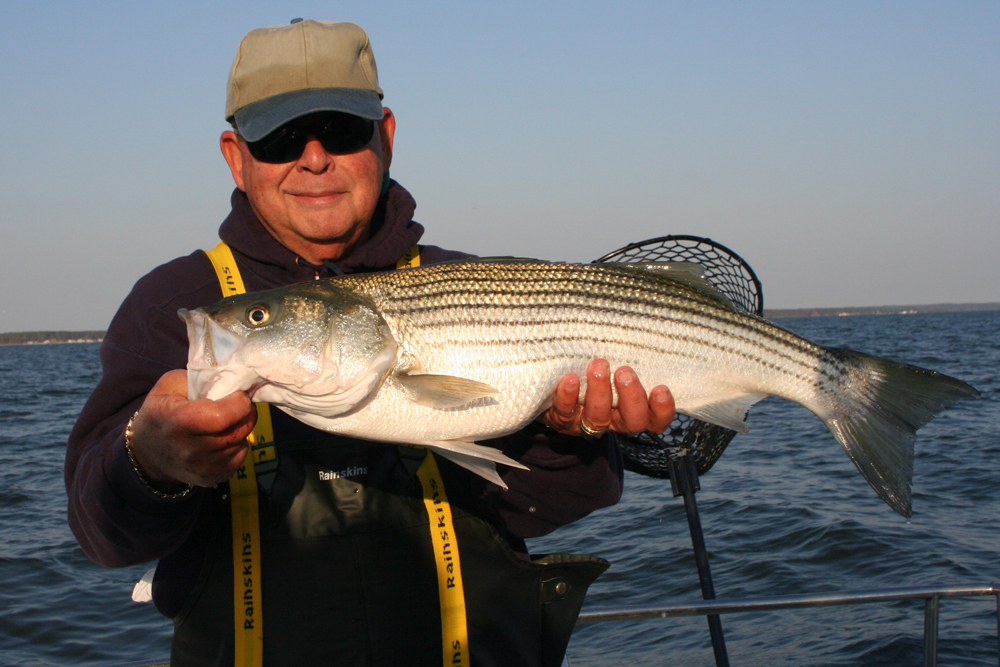Those who enjoy catch and release fishing want nothing more than to be sure the fish they throw back survive, and anglers who like to put fish in the cooler usually feel exactly the same way whether they're jigging for summer stripers or trying to chunk for tuna. Fishermen who have been around for a while, however, have likely seen plenty of examples of mishandled fish. The problem is far more often a lack of knowledge than it is neglect, but either way, the end result is the same: a dead fish.

This summer the issue was on full display, specifically at Podickory Point. There were huge numbers of stripers here, ranging in size from 12-inches clear up to 28-inchers. Naturally, there were many more throw-backs than keepers caught. And unfortunately, there were also more floaters dotting the Bay’s surface than anyone would wish for.
We know that many FishTalk fans are highly experienced anglers who know how to effectively catch and release without harming the fish. But we hope you’ll keep reading along, just as we hope new anglers will, because a refresher now and again never hurts. So whenever you plan to release a fish:
DO remove the hook with the fish in the water, and handle it minimally whenever possible. Using a de-hooker can help ease the process.
DON’T use under-gunned tackle for large fish that you know will be released. That fish is battling for its life and if the fight is extended, it may tire itself literally to death. When strictly catch-and-release fishing up-size the gear accordingly. Going for 50-pound-plus black drum (which are riddled with worms, don’t make for very good table fare, and should always be released), for example, you need to recognize that using 10-pound gear is going to lead to a very long fight which the fish will not likely survive.
DO lip average-sized fish (grab them by the lower jaw) when appropriate. With many species – bluefish, pickerel, and similarly toothy critters obviously excluded – this is one of the least-harmful ways to control them. Note: slipping a hand inside a gill plate is not lipping, and is a dangerous move for the fish as it places your fingers inches from its gills. There will likely be contact with them if the fish kicks or thrashes. How would you like someone touching your lungs?!
There are also two exceptions to safely lipping a fish: holding it horizontally in this fashion can stress the jaw hinges, so you should keep it vertical and/or support the fish’s mid-section. And large fish can suffer internal damage if they aren’t supported amidships. However…
DON’T use a dry hand or use a rag or towel to do the supporting – or even to touch a fish in the first place. Wet your hands first, or use a rag that’s been wetted down in advance. Anything that’s dry which touches the fish, especially a dry towel, can remove its slime. That slime is important, and not only boosts the fish’s hydrodynamics but more importantly also acts as its immune system by keeping out or trapping pathogens.

DO use non-offset circle hooks when fishing with bait, where applicable. It’s true that in certain situations circle hooks don’t work as well as J hooks – though in others they irrefutably work far better – and it’s also true that they take some getting used to. But the ratio of gut-hookings falls off a cliff, with non-offset circle hooks. Similarly, if you’re strictly catch-and-release fishing with lures, use barbless hooks or crimp down the barbs with a pair of pliers.
DON’T allow long eat-times when you do use J-hooks. If a three-count is sufficient to set the hook on a fish in a given situation, then a five-count will probably lead to a gut-hooked fish. The appropriate timing varies not only from species to species and situation to situation, but even from day to day for the same species or situation. So this is a judgement call, one you’ll have to make accurately if you plan to fish with J-hooks and release those fish to fight another day. And whatever you do…
DON’T DON’T DON’T use treble hooks for live-lining with spot, chumming, and other forms of fishing where fish commonly get hooked deep and you encounter throw-backs. Look at a situation like we had at Podickory last year, where chumming was what many people were doing and there were far too many 16- to 20-inch fish floating off dead – the use of treble hooks was a major contributor. Charter boats often use them, along with the excuse that they “have” to use the best fish-harvesting method for their clients. We call BULL**** on that, especially considering how often those charters at Podickory limited out by 9:00 a.m. last season. This is particularly offensive as many of their clients are learning that trebles are highly effective (yes, they are) and if the professionals are using them, well hey, it must be okay.
Here’s a suggestion for you captains shaking your heads right now: Why not just ask your clients ahead of time which they’d like to use? Explain to them that using J’s or circles it will take longer to catch their fish and they might not even limit out (god forbid!), but the undersized fish they release will have a far better chance for survival. Give them the option, and you might be shocked at how many people are firmly opposed to using those trebles when they understand the repercussions. You might also be surprised at how much they respect you for taking such things into account.
DO revive fish that seem on the cusp of exhaustion. You can do this by pumping water across their gills. If the boat is moving forward simply lip the (non-toothy) fish and hold it in the water so the forward motion forces water into its mouth. At anchor, gently work the fish from side to side to get some water flowing. Usually, you know it’s time to let go of the fish when it has recovered enough strength to chomp down and try biting your finger.
DON’T use a net, whenever possible. Again, this is a slime thing. The knots in the netting can scrape it off the fish. An exception: get a net specifically designed for catch-and-release fishing, which has a slick rubberized coating on the mesh.
DO remember that the cooler the water is, the better the fish can handle a catch-and-release experience. During the heat of the summer their chances of recovery drop significantly, so that’s the time to minimize your impact on them.
DON’T dig the hook out of a gut-hooked fish. Clip the line off as close to the fish as possible, and let it swim free. While this may not be ideal, fish stand a decent shot at survival with the hook still embedded inside them (some studies show survival rates upwards of 60-percent). But ripping or cutting the hook out usually causes so much damage the fish doesn’t have a chance.
Everyone wants the fish they release to survive. Treat those throw-back gently and with respect, and you never know – one of the fish you return to the water today could grow up to be a trophy on the end of you line tomorrow.